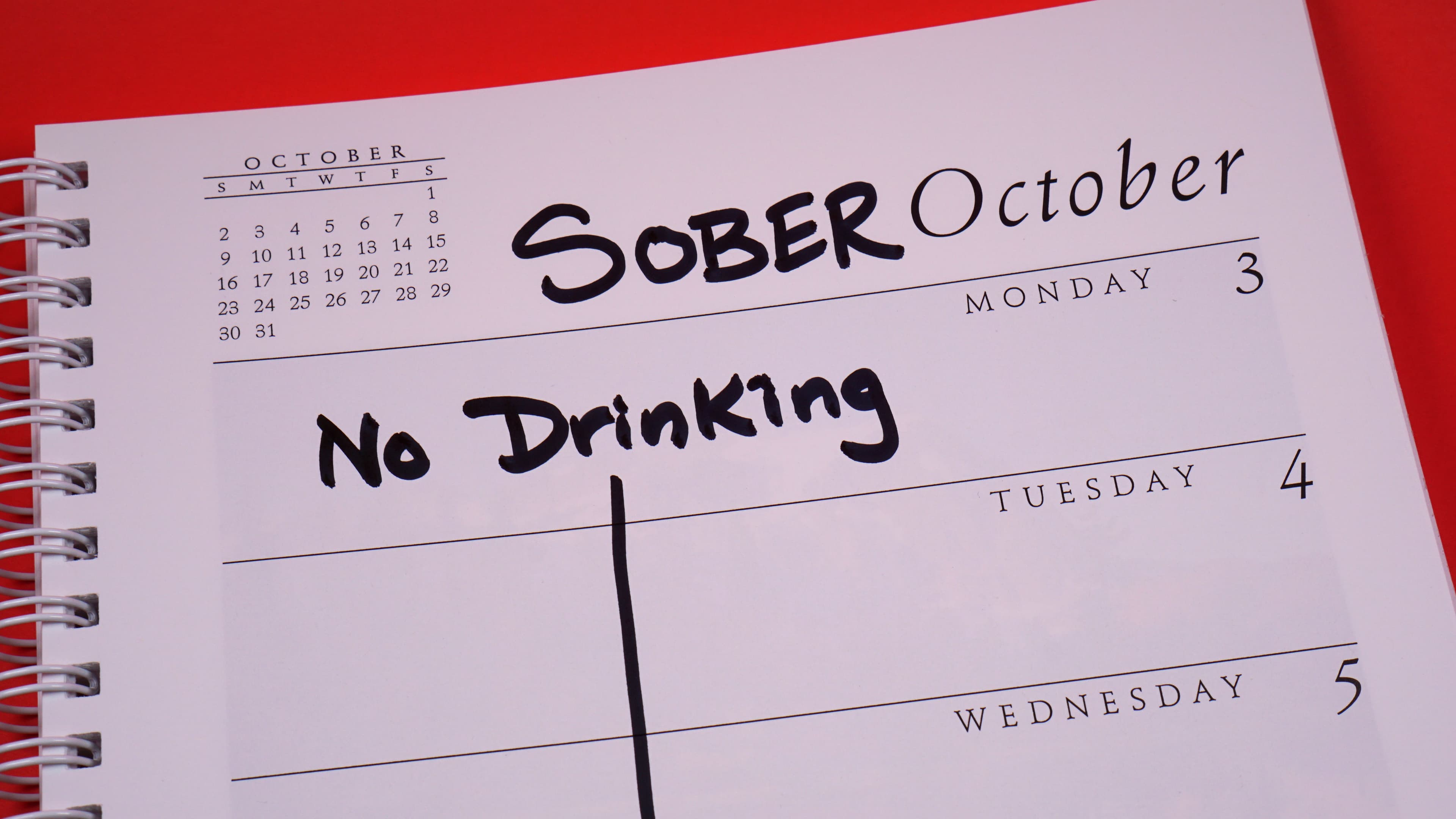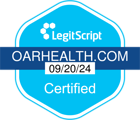What to Do if You Are Struggling With Sober October

In This Article
From Sober October to Dry December and Dry January, the colder months are brimmed with holiday festivities and more time inside, a cultural recipe for alcohol overindulgence. These catchy-titled months call attention to the rise of drinking and the need to take a break. Sober October, or “Ocsober,” encourages alcohol abstinence.
What Is Sober October?
Like Dry January, people aim to leave their glasses empty for the 31 days of October. Dry January is usually about drinking less for New Year's resolutions and curbing holiday drinking.
October’s trend was started in the UK by Macmillan Cancer Support in 2013 as an annual event encouraging participants to abstain from alcohol for the month. After all, excessive drinking increases the risk of several types of cancer. Periods of sobriety are good for your health. They can improve sleep, lower blood pressure, alleviate anxiety, and help your liver.
Since the alcohol abstinence month kicked off in 2013, it has spread internationally, gaining hype for promoting self-improvement. Sober October has been popularized by celebrities on its bandwagon such as Joe Rogan, Kelly Slater, Rosanne Barr, and Nikki Glaser.
The US has a relationship with alcohol that statistics identify as too close for comfort—an estimated 178,000 alcohol-related deaths happen per year. The cultural embrace of abstinence months can be a good thing and help people examine the role of alcohol in their lives. But they can also be challenging for people with alcohol use disorder (AUD), which 28.9 million Americans have.
There’s a good chance your Instagram feed has more mocktail content than usual, as many partaking in Sober October buoy the month with non-alcoholic beverages. Many who join the challenge choose to raise funds for a charity or recovery center. Sober October is part of a wider shift toward mindful drinking and the sober-curious movement.
Giving Sober October A Go
If you want to try Sober October, there are no rules other than abstinence. You might use the month to consider the role that alcohol plays in your life. Abstinence can encourage mindfulness around alcohol consumption. You might think about the following questions in your period of cutting back.
- How do your body and mind feel while abstaining from alcohol?
- At what point in the day do you most want to drink? What occurred before that moment?
- How many times a day do you think about alcohol?
- When you aren’t drinking, what do you do instead?
- What feelings do you associate with drinking?
- How much money would you typically spend per month on alcohol?
Why Is Sober October So Challenging for Some?
For certain people, Sober October might be a welcome cakewalk, but it can be difficult for others. Some surveys show that abstinence months are usually not a success for most people. According to a poll by CivicScience, just 16% of Americans made it to Dry January’s finish line (1).
Does Struggling With Sober October Mean You Have AUD?
Struggling or failing at Sober October might be a sign of AUD, but it also might not be. Let’s take a look at the reasons why.
Sober October might be a challenge because drinking is a habitual part of someone’s life. If having a drink is part of a post-work ritual each day, it might feel tough to break this habit. Taking a month of alcohol abstinence can help you recognize this pattern and break it.
In other cases, struggling through Sober October can point to a more pressing issue. There’s a difference between breaking a habit and having an addiction. A habit is a behavior that someone can unlearn. An addiction is a disorder that impacts the brain, making white-knuckling alcohol challenging or impossible for people with AUD. If abstinence feels impossible, you might have a deeper issue.
Sober months are for social drinkers, not necessarily those who are struggling with AUD. Taking a month of abstinence can help people consider the role of alcohol in their lives, but it’s important to remember that they aren’t an evidence-based tool for recovery. A month of abstinence can be helpful for someone with AUD, but it also doesn’t mean that this person is on their way to recovery. On the other hand, people with AUD may think that if they can take a month off drinking, they must not have a problem, which is, of course, a harmful rationalization.
Here’s What To Do If You Can’t Keep October Sober
Some telltale signs point to alcohol misuse or AUD, such as trying to abstain and finding it interferes with your ability to concentrate or everyday responsibilities.
But how else can you tell if alcohol use might be affecting your life? Here are some indicators.
- You struggle to abstain for an intended period.
- You have intense cravings.
- You change or choose social plans based on which will provide alcohol.
- You experience withdrawal symptoms when you stop drinking.
- Stopping drinking causes distress or anxiety.
- Drinking interferes with your relationships, work, or life.
If Sober October is a challenge or the idea of alcohol abstinence is inconceivable to you, an assessment can help better determine your risk for AUD. The Alcohol Use Disorders Identification Test (AUDIT) is a widely used simple assessment to help someone identify harmful drinking or alcohol dependence. It’s ten quick questions.
If you think you have problem drinking, you might have some of the above criteria or meet the guidelines for heavy alcohol use, which is eight or more drinks per week for women and fifteen or more drinks for men. The CDC identifies binge drinking as four or more drinks on a single occasion for women and five or more drinks on a single occasion for men.
At Oar Health, we help people seeking to reduce or stop drinking. We offer a free, simple assessment and can pair you with a medical provider who will personalize your treatment plan and prescribe medication to help reduce alcohol cravings, if appropriate. Treatment is nonjudgemental and confidential. If you’ve struggled through Sober October or with alcohol use during any month, we are here to help.
About The Author
Xenia Ellenbogen (she/they) is a journalist specializing in health, mental health, and wellness. Her writing has appeared in publications such as Everyday Health, Well+Good, Rewire News Group, Prism, and more.
Related Articles
- How It Works
- Alcohol & Health
- Alcohol Misuse & Alcohol Use Disorder
- Strategies to Drink Less or Quit
- Treatment Options
- Medication-Assisted Treatment
- Recovery Stories
- Member Stories
- Moderation Stories
- Sobriety Stories
- ¹ Oar Health membership plans include access to the Oar Health platform, virtual consultations with a healthcare professional, and medication if prescribed by a healthcare provider. 3 month membership plan costs $297, equating to $99/mo.
- ² Self-reported by members after 6 months of Oar Health membership.
- ³ Verywell Health survey of Oar Health members, published March, 2023.
- ⁴ Prescription medication is available only if prescribed by a licensed clinician.
- ⁵ Compounded medications are prepared based on a prescription from a healthcare provider. They are not reviewed by the FDA for safety or efficacy.






